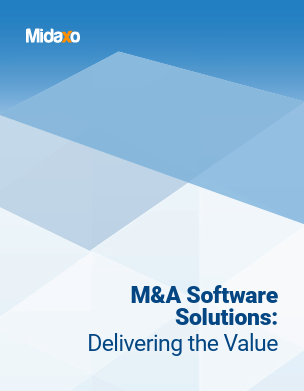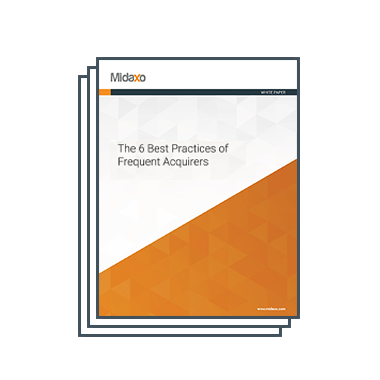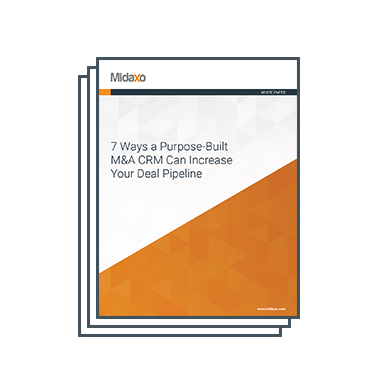Divestment Strategy Is Key to an Efficient and Successful Sale
Many companies are proficient in the acquisition process – with skills and capabilities to match. When it comes to divesting, however, many companies have never been through the process. And to make things more complicated, divesting of a business can often be more difficult than acquiring one. Running a successful divestment, just like an acquisition, requires an experience-driven skill set and a lot of preparation to become divestment-ready. Being a prepared seller involves identifying problems before they occur and taking early action to minimize disruption to employees, shareholders and other stakeholders. According to EY, 41% of surveyed companies stated that a lack of preparation adversely impacted the value of their divestment and 51% reported the divestiture took much longer than the expected three-month timeline.
Getting Divestment Ready
Getting divestment-ready extends far beyond identifying potential buyers. To get divestment-ready, a company – amongst other things – needs to:
- Conduct strategic analysis of the business unit in-scope for divestment (see Building Sell-side Capabilities);
- Critically assess the underlying drivers of the potential divestment and understand any possible adverse implications of divesting;
- Understand the overall M&A market-landscape (e.g. is it a buyer’s or seller’s market, how are deal multiples trending, etc.);
- Undertake a valuation exercise and consider a range of possible outcomes;
- Research potential buyers and appraise the merits of strategic versus financial buyers (and vice versa);
- Establish a divestment and separation team;
- Ensure the completeness and accuracy of any information within the scope of buyer due diligence (e.g. financial statements and contracts);
- Establish methods to minimize disruption to everyday business activities across the divestment process (including separation).
Getting divestment-ready cannot be achieved in two to three months. A successful divestment should commence 12-18 months in advance of the start of the divestment sales-cycle (i.e. going live to market). This level of planning is necessary to ensure that a divestment team remains in control and can set the pace and direction of the divestment-process. And a word of warning: reacting to an unsolicited/off-market approach from a supposedly interested potential acquirer and making a knee-jerk reaction to entering into a sales-process is typically the worst thing you can do.
Ultimately, the more prepared you are, the greater your ability to control the divestment outcome.
Why Sell-Side Divestment-Ready Planning Matters
Put simply, sell-side divestment planning entails the review, analysis, decision-making and actions required for a successful divestment. Divestment planning should be tied to long-term corporate goals and have strategic intent at the core.
To help establish early-stage divestment priorities, consider these simple questions:
- Why are we considering a divestment? Identify the reasons underpinning the divestment – for example, declining revenue, lack of strategic fit with corporate objectives, the need to raise capital/service debt/refinance, etc. (or reacting to an unsolicited offer – see above);
- How should we divest? This is tied directly to corporate goals and timelines and will likely have an impact on the pool of potential buyers targeted – e.g. outright 100% sale, partial sale, equity carve-out, etc.;
- Who wants to acquire? Having a good idea of potential buyers will help when it comes to marketing a business unit for sale and is likely to impact the purchase terms;
- What makes the business unit saleable? Consider what makes the business unit attractive and why it would be more valuable under different ownership.
Bain & company outline that 53% of senior executives report that having a clear strategic rationale for the divesture is behind divestment success. This emphasizes why being divestment-ready requires a 12–18-month window. Success doesn’t happen overnight, but failure certainly can.
Determine the Divestment Rationale
Careful consideration should be given to the rationale underpinning a divestment, since it helps frame the story presented to shareholders, employees, other stakeholders and – perhaps most importantly – potential buyers.
While by no means an exhaustive list, the most common drivers of divestment activity include:
- Refocus on core competencies: A company needs to be competitive in its primary service or product offering. Refocusing on a core competency in light of competition is one of the biggest drivers of divestment activity today;
- Raise capital: Divesting a business unit generates capital that a company may redeploy to areas where it can achieve higher returns – perhaps for corporate venture (CVC) activity, new acquisitions or to pay down debt/refinance;
- Unlock value: A business unit may perform much better under the ownership umbrella of another company whose core competencies align with that of the business unit targeted for divestment;
- Meet anti-trust requirements: Under anti-trust laws, government regulators may force a company that operates in an uncompetitive industry to divest or separate itself from a business unit to proceed with an M&A transaction that would further limit competition in the industry. Faced with this decision, the selling company must decide whether to divest or forgo the proposed acquisition.
Building Sell-side Capabilities
A continuous focus on the portfolio management of business units and a cadence of regular, small divestments is typically less disruptive than a blockbuster “mega divestment” – or divesting of multiple business units at once – due to the risk this brings, and the disruption caused to the ordinary course of business. Focusing on core business units allows a company to communicate a clear and compelling growth story. Conversely, selling “when you have to” is too late and might be interpreted as a sign of distress in the market. On this point, Harvard Business Review outlines that taking this approach is central to building internal sell-side capabilities.
A portfolio management-led approach to evaluating business units as potential divestment candidates can be supported by establishing a dedicated sell-side team (either with or without support from external advisors) to become divestment-ready. The remit of this team should be to continually/periodically review business units and identify those that could be deemed as suitable divestment candidates. EY reports that 63% of companies hold onto business assets for too long (rather than divesting) – so taking approach can prevent a business unit becoming orphaned or being held for longer than it should.
There’s a myriad of assessment criteria to consider when it comes to evaluating a business unit for divestment – some examples are outlined below.
Strategic Alignment
- Does the business unit align with the company’s current strategy, long-term vision and mission statement?
- What are the business unit’s core value drivers?
- How does the business unit impact other parts of the company?
- How would divesting impact the company’s overall supply chain?
- What is the quality of the management team, and how would a prospective buyer perceive this?
Financial Contribution
- What is the short, medium, and long-term financial outlook?
- Is demand for products/services growing or in decline?
- Does the P&L contribute to overall financial success?
- Is the business unit burning cash or consuming resources at an unsustainable rate?
- Are profit margins growing or in decline?
- Are there any emerging markets that may contribute to long-term financial success?
Competitive Landscape
- Does the business unit have a clearly defined market position?
- What products and services do competitors provide?
- What are the key benefits and features of products and services offered by competitors?
- Is the primary industry dominated by a small number of competitors (i.e. concentrated) or is it fragmented and susceptible to consolidation?
- What are the gaps in existing product/service offerings?
- Do any competitors have a clear and sustainable advantage?
- Is there a dominant M&A player?
Assets
- What intellectual property, proprietary products and services or skills (people) does the business unit possess? How attractive would these be to a prospective acquirer and could they help the business unit command a premium valuation on sale?
- What patents have competitors been able to secure and do these curtail operations of the business unit (freedom to operate).
Customer Base
- Is the customer base attractive – consider key customers and logos.
- Is the customer base stable – consider churn on a monthly/annual basis and compare to industry norms.
- Are there untapped opportunities for cross-selling with other areas of the company?
- Would divestment disadvantage the company when it comes to retaining or growing its customer base?
Risk & Compliance
- Are there any critical operating risks to consider?
- Is the business unit compliant with internal policies and any relevant external regulations?
- Is the business unit operating in a highly regulated marketplace?
- Could anti-trust/laws/competition policy impact divestment activity?
Impact of Divesting
- Would the business unit be more valuable to another owner?
- Is the estimated value of the business unit likely to generate a significant cash in-flow?
- What are the tax implications of divesting? Could a chargeable gain crystalize?
- Would the company experience unabsorbed overhead costs, reduced capabilities and loss of inter-divisional sales as a result of divesting of the business unit?
- How will the divestment be interpreted by the market (consider framing a “divestment story”).
See here for more on strategically assessing business units: 3 Divestment Strategy Frameworks to Align Portfolios
Conduct a Divestment Readiness Assessment
A divestment readiness assessment can be completed internally via a survey, workshop, or a combination of these. An assessment can also be undertaken by outside experts via interviews and standard data collection methods to judge divestment-readiness. These methods include employee and manager interviews and surveys. When collecting data from a large number of employees, focus groups can also be used in place of one-on-one interviews.
Information collected from the readiness assessment can help shape a divestment strategy. This includes:
- The most appropriate governance model to oversee the divestment;
- The key people to manage the divestment and expected resource requirements;
- The most appropriate executive sponsorship model and support;
- Critical timelines and milestones;
- The principal risks and how these can be best mitigated;
- External consulting and support requirements (e.g. tax, accounting, financial).
Takeaway on Becoming Divestment-Ready
- Getting divestment-ready takes time and goes well beyond lining up potential buyers. Consider planning 12-18 before going live to market;
- Be sure you understand the driver(s) of the divestment and think about the divestment story (how to frame the selling of a business unit);
- Take a portfolio management approach to business units and build sell-side capabilities via establishing a dedicated divestment and separation team;
- Consider a broad range of assessment criteria when it comes to evaluating business units as potential divestment candidates;
- Consider conducting a divestment readiness assessment to help shape the divestment strategy.





